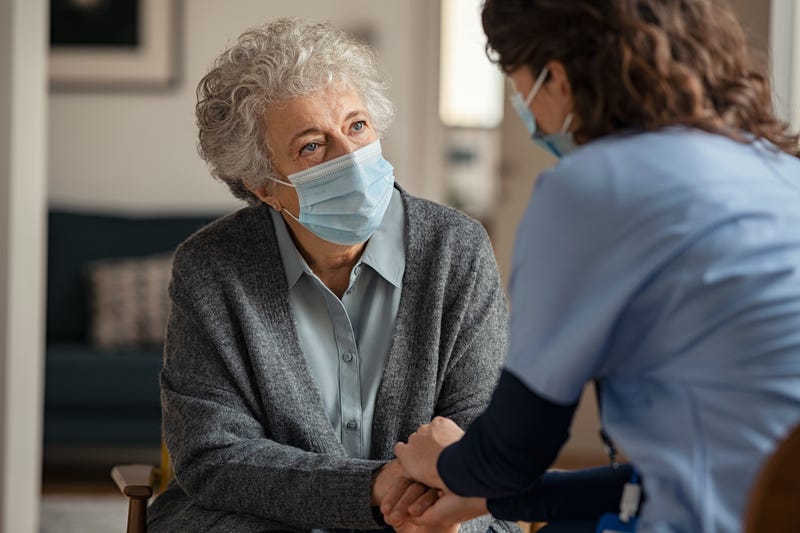
LANSING, Mich. (WWJ) -- The holiday season has officially arrived and officials with the Michigan Department of Health and Human Services are reminding the public of its recently updated guidance on visiting hours at long-term care facilities.
Those who want to spend time with family and friends over the holidays at long-term care facilities can do so, but are urged to follow certain protocols in place amid the COVID-19 pandemic.
Long-term care facilities include nursing homes, homes for the aged, adult foster care facilities, hospice facilities, substance use disorder residential facilities or assisted living facilities, according to MDHHS.

As the state experiences a “fourth surge” of COVID-19 this fall and winter, MDHHS recently updated its guidance based on recent recommendations from the Centers for Medicaid and Medicare Services (CMS).
MDHHS director Elizabeth Hertel says visits at long-term care facilities are important.
“Long-term care residents receive physical, emotional and spiritual support by visiting with their family and friends, particularly during the holiday season,” Hertel said. “Our updated guidance provides key steps to take to make these visits as safe and fulfilling as possible.”
Per the updated recommendations, CMS says if a visitor, resident or their representative “is aware of the risks associated with visitation, and the visit occurs in a manner that does not place other residents at risk (e.g., in the resident’s room), the resident must be allowed to receive visitors as he/she chooses.”
Previous measures in place were designed to prevent visitors from introducing COVID-19 into long-term care facilities, but officials say “the risks of COVID-19 transmission related to visitation is low, especially when core principles of infection prevention are observed and in settings where vaccination rates are high.”
Face masks will not be required if the resident and all their visitors are fully vaccinated and the resident is not “moderately or severely immunocompromised.
However, if the facility’s county COVID-19 community level of transmission is substantial to high, all residents and visitors, regardless of vaccination status, should wear face coverings or masks and physically distance.
MDHHS says it has issued a Public Health Advisory recommending that everyone over the age of 2 should wear a face mask at indoor gatherings regardless of their vaccination status and establishments should implement policies to ensure everyone entering or seeking services wears a mask.
Other highlights of the updated guidance include:
-- Visitors who have a positive viral test for COVID-19, symptoms of COVID-19, or currently meet the criteria for quarantine, should NOT enter the facility.
-- Outdoor visits are preferred during times of warmer weather when the resident or visitor is not fully vaccinated.
-- Facilities must allow indoor visitation at all times and for all residents. Officials say while it’s safer for visitors to not enter the facility during an outbreak investigation, visitors must still be allowed in the facility.
-- While health officials don’t recommend it, residents who are on transmission-based precautions or quarantine may receive visitors, especially if alternative methods of visitation such as phone call, window or virtual visitation are not conducive for visitation.
-- Facilities can no longer limit the frequency and length of visits for residents, the number of visitors or require advance scheduling of visits.
More information on the updated guidance from CMS can be found here.
Health officials say more than 80% of residents in long-term care facilities across the state are fully vaccinated, and booster doses are now available to those who live or work in those settings.
Facilities are being encouraged to schedule on-site clinics so residents, staff and visitors can receive their vaccinations and boosters as soon as possible.


